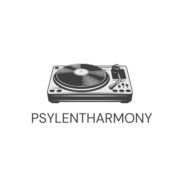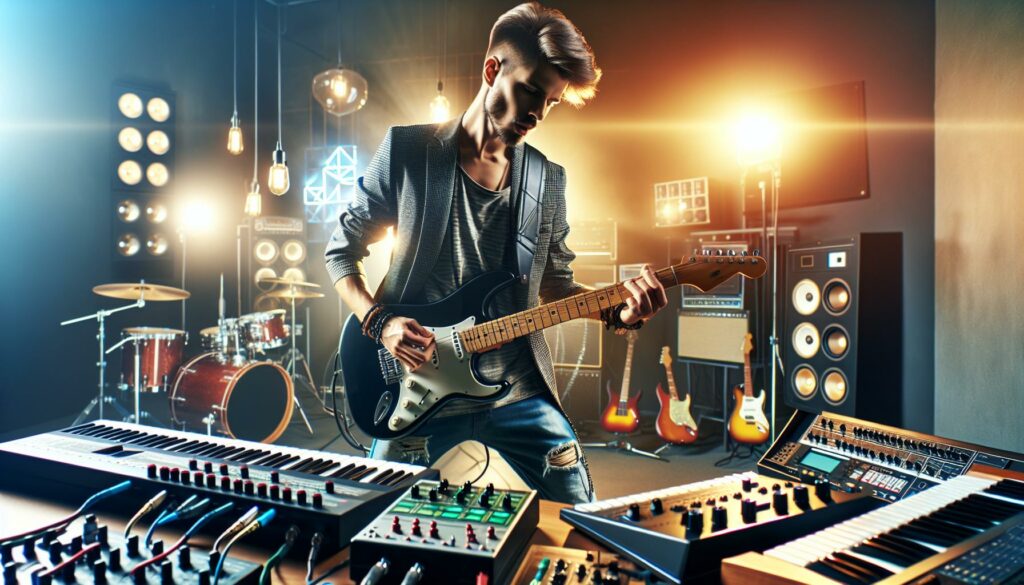As a music producer and longtime performer I’ve watched pop music evolve dramatically over the decades. The instruments that define today’s pop sound are quite different from what we heard in the 1950s and 60s. Yet some classic instruments remain timeless staples of the genre. From synths and drum machines to electric guitars and digital audio workstations modern pop music relies heavily on both electronic and traditional instruments. I’ll break down the essential instruments that give pop music its signature sound and explain why they’ve become so crucial to hit-making. Whether you’re an aspiring musician or just curious about what goes into creating today’s chart-topping tracks understanding these key instruments will help you appreciate pop music on a whole new level.
- Electric guitars, synthesizers, and digital workstations (DAWs) have been the most influential instruments in shaping modern pop music’s evolution
- The 1980s marked a significant shift in pop music with the introduction of digital synthesizers, programmable drum machines, and MIDI technology
- Modern pop production relies heavily on both traditional instruments (electric guitars, bass) and digital tools (Auto-Tune, virtual instruments, plugins)
- Digital Audio Workstations (DAWs) like Pro Tools, Logic Pro, and Ableton Live have become essential tools for creating contemporary pop music
- While electronic instruments dominate modern pop, classic instruments like electric guitars and bass guitars remain fundamental to the genre
Pop Music Instruments
1950s and 1960s
Electric guitars dominated the pop music landscape in the 1950s and 1960s with iconic models like the Fender Stratocaster and Gibson Les Paul. The rhythm section consisted of acoustic drums, electric bass guitars (notably the Fender Precision Bass) and pianos. Notable additions included:
- Electric organs (Hammond B3) in soul-influenced pop
- Electric pianos (Wurlitzer, Rhodes) for softer ballads
- Brass sections featuring trumpets, saxophones and trombones
- Orchestral strings for lush arrangements
1970s
The 1970s introduced revolutionary electronic instruments that transformed pop production:
- Analog synthesizers (Moog, ARP) for innovative sound textures
- Drum machines (Roland CR-78) for precise rhythmic patterns
- Electric guitars with effects pedals (wah-wah, fuzz, chorus)
- Multiple-track recording consoles for layered arrangements
1980s
Digital technology revolutionized pop music instrumentation in the 1980s:
- Digital synthesizers (Yamaha DX7, Roland Jupiter-8)
- Programmable drum machines (Roland TR-808, Linn Drum)
- Samplers (Fairlight CMI, E-mu Emulator)
- MIDI keyboards for expanded sound possibilities
- Digital Audio Workstations (Pro Tools, Logic Pro, Ableton Live)
- Virtual instruments and plugins for diverse sound options
- Auto-Tune and vocal processing technology
- USB/MIDI controllers for precise sound manipulation
- Software synthesizers emulating classic analog sounds
| Decade | Key Instrument Innovation | Impact on Pop Sound |
|---|---|---|
| 1950s-60s | Electric Guitar | Raw, energetic rock influence |
| 1970s | Analog Synthesizer | Electronic texture layers |
| 1980s | Digital Synthesizer | Precise, programmed arrangements |
| 1990s-Present | DAW Software | Unlimited sound possibilities |
Electric Guitar: The Heart of Pop Music
The electric guitar transformed pop music through its versatility in creating distinctive sounds from clean melodies to distorted power chords. Its influence spans multiple decades with iconic performances shaping the evolution of popular music.
Famous Guitar Models in Pop
The Fender Stratocaster dominates pop music with its bright tones featured in hits by artists like John Mayer, Ed Sheeran, Bruno Mars. Three standout models include:
- Gibson Les Paul Custom delivers rich sustain in pop ballads with its mahogany body construction
- Fender Telecaster creates twangy lead lines through its single-coil pickups
- PRS Custom 24 combines versatility with modern electronics for contemporary pop sounds
- Delay creates echoing rhythms by repeating the guitar signal at timed intervals
- Reverb adds space dimension through simulated room acoustics
- Chorus thickens the tone by layering slightly detuned copies of the signal
- Palm muting produces rhythmic chunks by dampening strings with the picking hand
- Hammer-ons execute quick note sequences without picking each string
| Effect Type | Popular Usage | Notable Songs |
|---|---|---|
| Delay | Echo patterns | “”Edge of Glory”” – Lady Gaga |
| Reverb | Spatial depth | “”Style”” – Taylor Swift |
| Overdrive | Warm distortion | “”Sugar”” – Maroon 5 |
| Chorus | Thickened sound | “”Message in a Bottle”” – Police |
Keyboards and Synthesizers
Keyboards and synthesizers create the foundation of modern pop music production through melodic elements, harmonic progressions and signature sounds. Digital workstations and classic synth sounds combine to deliver the characteristic electronic textures found in contemporary pop hits.
Digital Workstations
Digital Audio Workstations (DAWs) transform keyboards into versatile production hubs through virtual instrument integration and MIDI control capabilities. Popular DAWs like Logic Pro, Ableton Live and FL Studio include built-in keyboard instruments such as:
- Electric pianos (Rhodes, Wurlitzer)
- Acoustic piano emulations
- Organ simulations (Hammond B3, Vox Continental)
- Orchestral instruments (strings, brass, woodwinds)
Modern keyboard workstations feature:
| Feature | Capability |
|---|---|
| Polyphony | 128-256 voices |
| Memory | 1-2GB sample storage |
| Connectivity | USB, MIDI, Audio I/O |
| Controls | 61-88 weighted keys |
Classic Synth Sounds
Iconic synthesizer sounds define pop music genres through distinctive timbres and textures. Essential synth categories include:
Lead Synthesizers:
- Moog Minimoog (Taylor Swift “”Style””)
- Sequential Prophet-5 (The Weeknd “”Blinding Lights””)
- Roland Jupiter-8 (Lady Gaga “”Just Dance””)
Pad Synthesizers:
- Yamaha DX7 (Phil Collins “”Take Me Home””)
- Oberheim OB-X (Madonna “”Like a Virgin””)
- Roland Juno-106 (The 1975 “”Somebody Else””)
Bass Synthesizers:
- Roland TB-303 (Daft Punk “”Da Funk””)
- Moog Taurus (Michael Jackson “”Thriller””)
- Korg MS-20 (Calvin Harris “”Feel So Close””)
- Oscillator waveforms (saw, square, triangle)
- Filter types (low-pass, high-pass, band-pass)
- Modulation options (LFO, envelope, arpeggiator)
- Effects processing (chorus, delay, reverb)
Modern Beat Production Tools
Digital beat-making equipment transforms raw musical ideas into polished pop productions. These tools combine hardware precision with software flexibility to create the signature rhythms of contemporary hits.
Drum Machines
The Akai MPC Live II leads modern drum machine innovation with 16 velocity-sensitive pads a 7-inch touchscreen. Roland’s TR-8S recreates classic drum sounds from the TR-808 TR-909 while adding modern sampling capabilities. Popular models include:
- Native Instruments Maschine MK3: Features 96 kHz audio USB audio interface
- Elektron Digitakt: Offers 8 audio tracks 8 MIDI tracks
- Pioneer Toraiz SP-16: Includes Dave Smith analog filters 16GB storage
- Arturia DrumBrute Impact: Provides 10 analog instruments 64-step sequencer
Digital Audio Software
Industry-standard Digital Audio Workstations (DAWs) integrate virtual drum instruments sample libraries audio effects. Key features include:
- Pro Tools: 128 simultaneous audio tracks 512 MIDI tracks
- Ableton Live: Max for Live integration real-time warping
- FL Studio: Pattern-based workflow lifetime free updates
- Logic Pro X: Drummer feature 28 virtual drum kits
- Studio One: Drag-drop functionality parallel processing
- Reason: Rack Extension format CV/Gate routing
- Beat grid quantization
- MIDI mapping capabilities
- Third-party plugin support
- Multi-track recording options
- Real-time effect processing
Bass Guitar’s Role in Pop Music
The bass guitar forms the foundation of modern pop music by bridging rhythm and harmony. It connects drum patterns with melodic elements while providing crucial low-end frequencies that drive songs forward.
Electric vs. Synthetic Bass
Electric bass guitars deliver authentic, organic tones through physical string vibrations and amplification. Popular models include:
- Fender Precision Bass: Creates punchy, defined notes heard in hits like Michael Jackson’s “”Billie Jean””
- Music Man StingRay: Produces bright, aggressive tones featured in Bruno Mars tracks
- Ibanez SR Series: Offers versatile sounds used by modern pop bassists
Synthetic bass alternatives include:
- Digital synthesizers: Roland TB-303 emulations for electronic pop
- Virtual instruments: Native Instruments’ MASSIVE for EDM-style bass
- Sample libraries: Spectrasonics Trilian for layered bass sounds
| Bass Type | Frequency Range | Common Pop Usage |
|---|---|---|
| Electric | 41 Hz – 392 Hz | Live performances & studio recording |
| Synthetic | 20 Hz – 400 Hz | Electronic production & remixes |
The choice between electric and synthetic bass depends on:
- Production style
- Genre requirements
- Sonic characteristics needed
- Recording environment limitations
- Performance context
Modern pop often combines both types, layering synthetic bass under electric bass recordings for enhanced impact in the mix.
The Evolution of Pop Vocals
Pop vocal production transformed from simple recording techniques to complex digital processing methods. Modern vocal production combines advanced microphone technology with sophisticated audio processing to create polished, professional sounds.
Microphones and Processing
Studio-grade condenser microphones capture vocals with pristine clarity in professional pop productions. Here are the essential components of modern vocal recording:
Key Microphone Types:
- Large-diaphragm condensers (Neumann U87, Sony C800G)
- Dynamic microphones (Shure SM7B, Electro-Voice RE20)
- USB microphones (Blue Yeti, Shure MV7)
Signal Processing Chain:
- Preamps (Neve 1073, API 512c)
- Compressors (LA-2A, 1176)
- EQ units (Pultec EQP-1A, SSL Channel Strip)
| Processing Type | Common Settings | Purpose |
|---|---|---|
| Compression | 4:1 ratio, 2-4ms attack | Control dynamics |
| EQ | +2-3dB at 12kHz, cut at 200Hz | Add air, reduce mud |
| De-essing | -6dB at 6-8kHz | Control sibilance |
Modern vocal production incorporates digital tools like Auto-Tune, Melodyne, and Waves Plugins to achieve perfect pitch and timing. These processors create signature effects in pop genres:
- Pitch correction (subtle to extreme)
- Harmonization (doubles, octaves)
- Time-based effects (delay, reverb)
- Modulation (chorus, flanger)
The combination of high-end microphones with analog and digital processing creates the polished vocal sound characteristic of contemporary pop music.
Pop music’s instrumental landscape has transformed dramatically from analog simplicity to digital complexity. I’ve explored how electric guitars synths and digital tools have shaped the genre’s evolution over decades. Today’s pop production seamlessly blends traditional instruments with cutting-edge technology creating endless sonic possibilities.
The future of pop music instruments looks even more exciting. As technology advances I expect to see new innovative tools emerge while traditional instruments continue to play vital roles. Whether you’re a budding musician or a curious listener understanding these instruments helps appreciate the artistry behind your favorite pop hits.
Remember it’s not just about the instruments themselves but how they work together to create the perfect pop sound. The magic happens when traditional and modern tools combine to craft those unforgettable hooks we all love.

